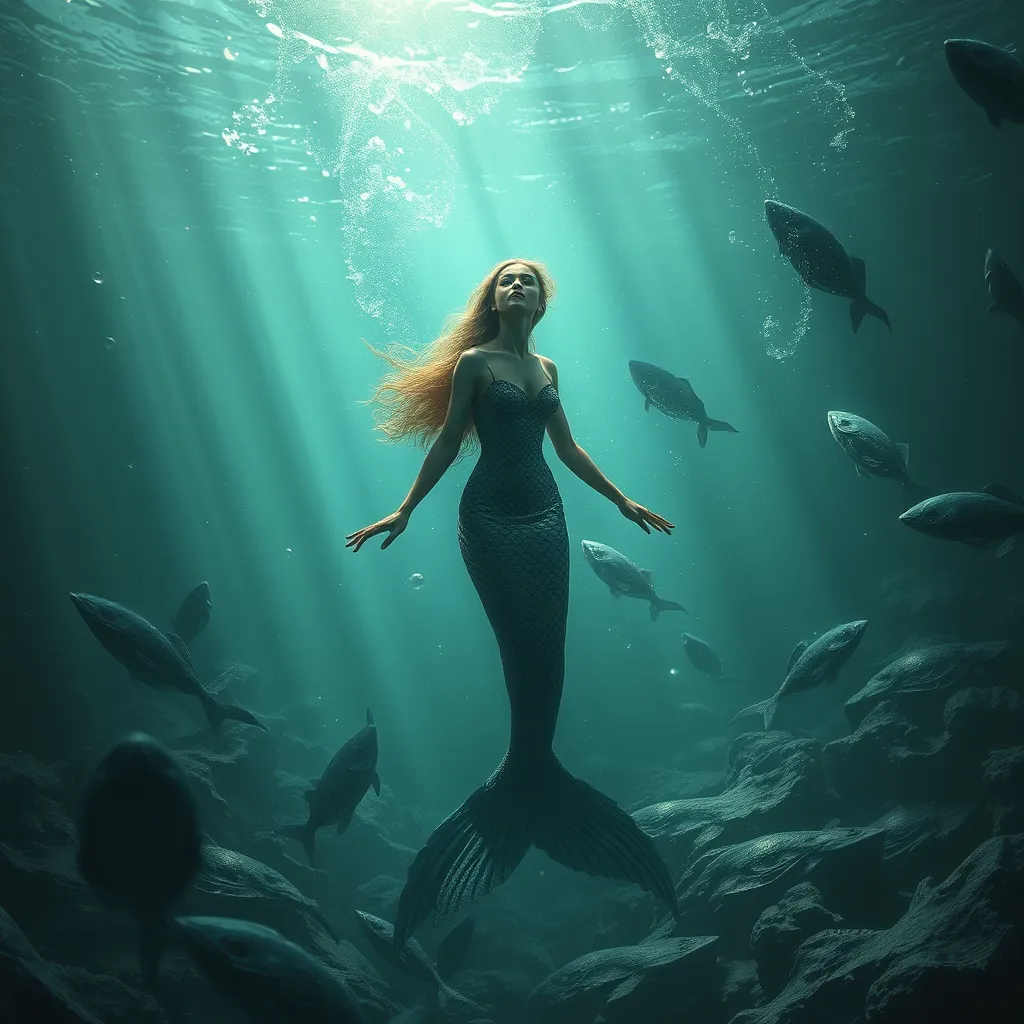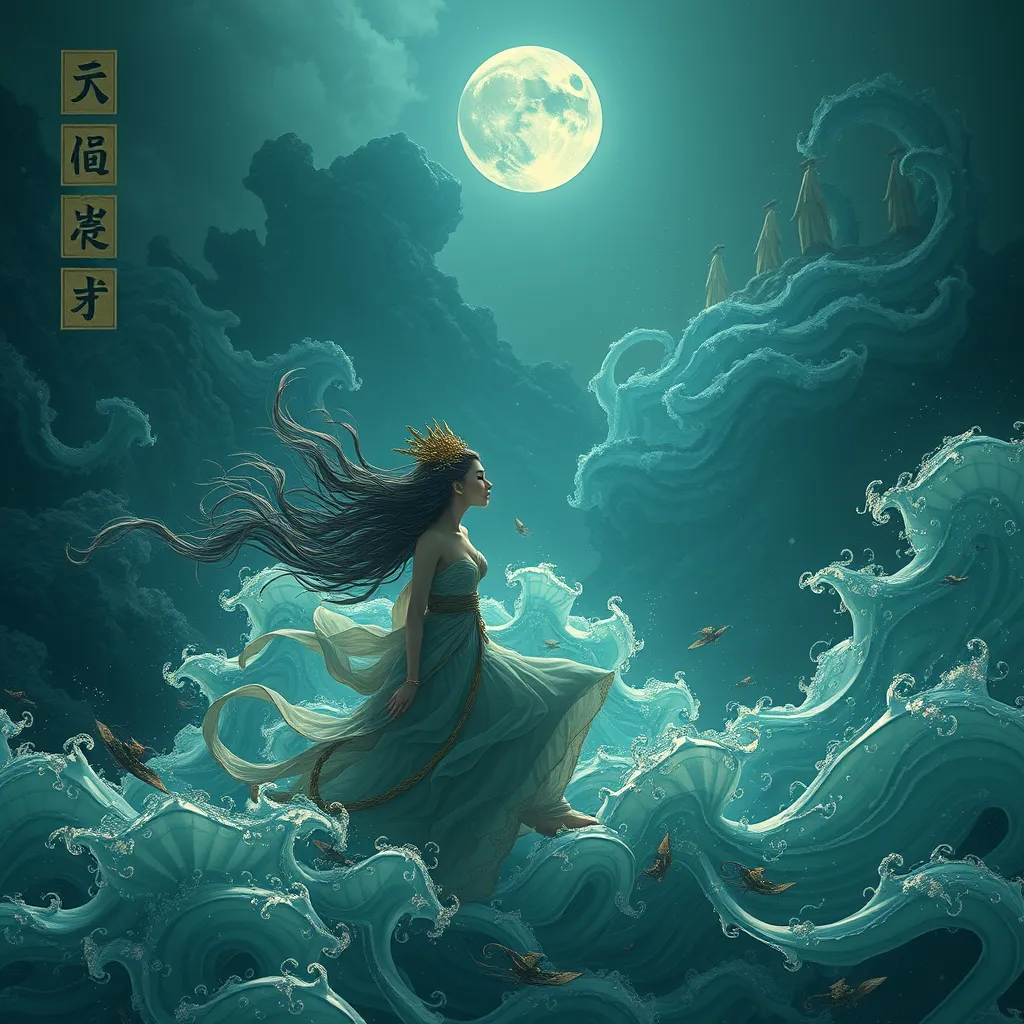Scales & Secrets: Unveiling the Mermaid Mythos
I. Introduction to the Mermaid Mythos
Mermaids have captivated human imagination for centuries, serving as enchanting yet enigmatic figures in folklore. Defined as aquatic beings with the upper body of a human and the tail of a fish, they embody the allure of the ocean and the mysteries it holds.
Across various cultures, mermaids symbolize different themes, from love and beauty to danger and temptation. The significance of mermaids stretches beyond mere myth; they reflect cultural values, fears, and aspirations, illustrating humanity’s complex relationship with the sea.
This article aims to delve into the origins, evolution, and impact of mermaid myths, exploring how these fascinating creatures have influenced literature, art, and modern culture.
II. Historical Origins of Mermaid Legends
Mermaid legends can be traced back to ancient civilizations, where they were woven into the fabric of storytelling. Different cultures provided their interpretations of these beings, often influenced by their environment and societal beliefs.
A. Ancient civilizations and their interpretations of mermaids
1. Mesopotamian and Greek influences
The earliest representations of mermaid-like figures can be found in Mesopotamian mythology, particularly the goddess Atargatis, who was depicted as a fish-tailed woman. Similarly, the Greeks contributed significantly to mermaid lore with the Sirens, alluring creatures whose songs led sailors to their doom.
2. Early depictions in art and literature
Throughout history, mermaids have been depicted in various forms of art and literature. From ancient pottery to medieval manuscripts, these representations often emphasized their beauty and mystique, cementing their place in folklore.
B. The role of sailors and maritime culture in spreading mermaid tales
Sailors played a crucial role in the dissemination of mermaid tales. As they navigated the unpredictable waters, they shared stories of their encounters with these enchanting beings. The dangers of the sea often blurred reality and myth, leading to tales of mermaids that were both captivating and cautionary.
C. The transformation from sirens to mermaids in folklore
Over time, the image of mermaids evolved from that of the dangerous Sirens to more benevolent figures. This transformation reflected changing societal perceptions about femininity and the role of women, highlighting the duality of mermaids as both alluring and perilous.
III. Cultural Variations of Mermaids Around the World
Mermaid myths are not confined to any single culture; they manifest in diverse forms across the globe. Each culture imbues its mermaid legends with unique characteristics, reflecting the values and beliefs of the people.
A. European mermaid myths and their characteristics
In Europe, mermaids are often portrayed as beautiful but tragic figures, with tales like that of the Little Mermaid emphasizing themes of sacrifice and longing. The imagery is rich with symbolism, often connecting mermaids to the mysteries of the sea and the human condition.
B. Asian mermaid legends and unique features
Asian cultures present a variety of mermaid-like figures, such as the Chinese “Jingwei,” a bird with a human soul, and the Japanese “Ningyo,” who is often depicted as a fish-woman hybrid. These legends often emphasize moral lessons and the balance between nature and humanity.
C. African and Indigenous interpretations of aquatic beings
In Africa, mermaid-like figures such as the “Mami Wata” are revered as powerful spirits of water. Indigenous cultures across the Americas also have their aquatic beings, often symbolizing fertility, life, and the connection to the spiritual world.
D. Comparative analysis of themes and symbols across cultures
Despite their differences, many mermaid legends share common themes: the allure of the unknown, the dangers of desire, and the connection to nature. This comparative analysis reveals the universal aspects of the mermaid mythos that resonate across cultures.
IV. The Symbolism of Mermaids in Literature and Art
Mermaids have long served as powerful symbols in literature and art, representing a blend of beauty, mystery, and danger.
A. Mermaids as symbols of beauty and seduction
In many narratives, mermaids epitomize beauty and seduction, often leading to the downfall of those who fall under their spell. Their enchanting songs and alluring appearances make them irresistible, yet dangerous.
B. The duality of mermaids: allure and danger
This duality is a recurring theme, as mermaids are both enchanting and perilous. They embody the idea that beauty can mask danger, highlighting the complexities of desire and temptation.
C. Evolution of mermaid representation in modern literature and media
In contemporary literature and media, mermaids have been reimagined in various ways, often as symbols of empowerment and independence. Works like Disney’s “The Little Mermaid” and more recent adaptations showcase the evolution of their representation, reflecting changing societal values.
V. Scientific Perspectives on Mermaid Myths
The fascination with mermaids has also attracted scientific inquiry, leading to various theories about the origins of mermaid sightings.
A. Theories on the origins of mermaid sightings
1. Manatees and other marine animals
One popular theory suggests that sightings of mermaids may have originated from misidentifications of marine animals, such as manatees or dugongs, which can resemble humans from a distance.
2. Psychological explanations for mermaid legends
Psychological theories propose that the allure of mermaids may stem from deep-seated human fears and desires related to the unknown, particularly the mysterious and unpredictable nature of the sea.
B. The intersection of folklore and marine biology
The study of marine biology can provide insights into the creatures that may have inspired mermaid legends, revealing the complex relationship between humans and the ocean. Understanding marine ecosystems can enhance our appreciation for the myths that have emerged from our encounters with the sea.
VI. Mermaids in Modern Pop Culture
Mermaids have made a significant impact on modern pop culture, appearing in various forms of entertainment and fashion.
A. Iconic films and television shows featuring mermaids
Films like “The Little Mermaid,” “Splash,” and “Aquamarine” have popularized mermaid imagery, making these mythical beings central to contemporary storytelling. Television shows such as “H2O: Just Add Water” and “Siren” have further explored the allure and complexity of mermaids.
B. The resurgence of mermaid imagery in fashion and social media
Mermaid aesthetics have surged in popularity, influencing fashion, beauty, and social media trends. From iridescent fabrics to ocean-inspired makeup, the mermaid theme resonates with a desire for escapism and fantasy.
C. The role of mermaids in contemporary feminist narratives
Modern interpretations of mermaids often incorporate feminist themes, portraying them as symbols of empowerment and independence. This shift reflects broader societal changes in the perception of women and their roles.
VII. The Impact of Mermaids on Society and Environment
Mermaids have not only influenced culture but have also played a role in environmental activism and awareness.
A. Mermaids as symbols of environmentalism and ocean conservation
Mermaids are increasingly seen as symbols of the ocean’s beauty and fragility, inspiring movements focused on marine conservation and environmental protection.
B. The role of mermaid mythology in raising awareness about marine issues
Through storytelling and art, mermaid myths can raise awareness about the importance of preserving marine ecosystems and the threats posed by pollution and climate change.
C. Community initiatives inspired by mermaid legends
Community initiatives, such as beach clean-ups and educational programs, have been inspired by mermaid legends, fostering a sense of responsibility towards the ocean and its inhabitants.



